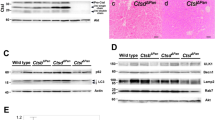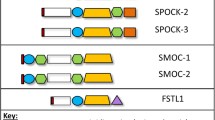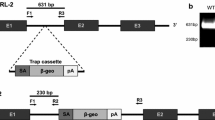Abstract
Members of the protein disulfide isomerase (PDI) family play a critical role in catalyzing the formation of disulfide bonds in secretory proteins, and most of these enzymes have a wide tissue distribution. However, the pancreas-specific PDI homolog was previously suggested to be exclusively expressed in the pancreas (thus commonly referred to as PDIp). In the present study, we found that PDIp was also highly expressed in several other tissues in mice, including the stomach, cecum, ileum, adrenal glands, epididymis, and prostate. Notably, in the digestive organs, such as the stomach and pancreas, very high levels of PDIp were selectively expressed in the digestive enzyme-secreting cells (e.g., gastric chief cells and pancreatic acinar cells). This observation suggests that PDIp may function as a protein-folding catalyst for secretory digestive enzymes. In ileum, PDIp was exclusively expressed in Paneth cells. In addition, high levels of PDIp expression were also detected in normal human pancreas, but its expression was mostly absent in human pancreatic duct adenocarcinoma and pancreatic cancer cell lines. The absence of PDIp expression in pancreatic adenocarcinoma may serve as an additional biomarker for pancreatic cancer.






Similar content being viewed by others
Abbreviations
- PDI:
-
Protein disulfide isomerase
- PDIp:
-
Pancreas-specific PDI homolog
References
Appenzeller-Herzog C, Ellgaard L (2008) The human PDI family: versatility packed into a single fold. Biochim Biophys Acta 1783:535–548
Ayabe T, Satchell DP, Wilson CL, Parks WC, Selsted ME, Ouellette AJ (2000) Secretion of microbicidal alpha-defensins by intestinal Paneth cells in response to bacteria. Nat Immunol 1:113–118
Bergeron JJ, Brenner MB, Thomas DY, Williams DB (1994) Calnexin: a membrane-bound chaperone of the endoplasmic reticulum. Trends Biochem Sci 19:124–128
Conn KJ, Gao W, McKee A, Lan MS, Ullman MD, Eisenhauer PB, Fine RE, Wells JM (2004) Identification of the protein disulfide isomerase family member PDIp in experimental Parkinson’s disease and Lewy body pathology. Brain Res 1022:164–172
Desilva MG, Lu J, Donadel G, Modi WS, Xie H, Notkins AL, Lan MS (1996) Characterization and chromosomal localization of a new protein disulfide isomerase, PDIp, highly expressed in human pancreas. DNA Cell Biol 15:9–16
Desilva MG, Notkins AL, Lan MS (1997) Molecular characterization of a pancreas-specific protein disulfide isomerase, PDIp. DNA Cell Biol 16:269–274
Dias-Gunasekara S, Gubbens J, van Lith M, Dunne C, Williams JA, Kataky R, Scoones D, Lapthorn A, Bulleid NJ, Benham AM (2005) Tissue-specific expression and dimerization of the endoplasmic reticulum oxidoreductase Ero1beta. J Biol Chem 280:33066–33075
Ellem SJ, Risbridger GP (2007) Treating prostate cancer: a rationale for targeting local oestrogens. Nat Rev Cancer 7:621–627
Ellgaard L, Ruddock LW (2005) The human protein disulphide isomerase family: substrate interactions and functional properties. EMBO Rep 6:28–32
Elliott JG, Oliver JD, Volkmer J, Zimmermann R, High S (1998) In vitro characterisation of the interaction between newly synthesised proteins and a pancreatic isoform of protein disulphide isomerase. Eur J Biochem 252:372–377
Freedman RB, Klappa P, Ruddock LW (2002) Protein disulfide isomerases exploit synergy between catalytic and specific binding domains. EMBO Rep 3:136–140
Fu X, Zhu BT (2009a) Human pancreas-specific protein disulfide isomerase homolog (PDIp) is an intracellular estrogen-binding protein that modulates estrogen levels and actions in target cells. J Steroid Biochem Mol Biol 115:20–29
Fu X, Zhu BT (2009b) Human pancreas-specific protein disulfide isomerase homolog (PDIp) is redox-regulated through formation of an inter-subunit disulfide bond. Arch Biochem Biophys 485:1–9
Fu X, Wang P, Zhu BT (2008) Protein disulfide isomerase is a multifunctional regulator of estrogenic status in target cells. J Steroid Biochem Mol Biol 112:127–137
Ghoos Y, Vantrappen G (1971) The cytochemical localization of lysozyme in Paneth cell granules. Histochem J 3:175–178
Goggins M (2005) Molecular markers of early pancreatic cancer. J Clin Oncol 23:4524–4531
Goggins M (2007) Identifying molecular markers for the early detection of pancreatic neoplasia. Semin Oncol 34:303–310
Gruber CW, Cemazar M, Heras B, Martin JL, Craik DJ (2006) Protein disulfide isomerase: the structure of oxidative folding. Trends Biochem Sci 31:455–464
Harwig SS, Tan L, Qu XD, Cho Y, Eisenhauer PB, Lehrer RI (1995) Bactericidal properties of murine intestinal phospholipase A2. J Clin Invest 95:603–610
Kelly P, Feakins R, Domizio P, Murphy J, Bevins C, Wilson J, McPhail G, Poulsom R, Dhaliwal W (2004) Paneth cell granule depletion in the human small intestine under infective and nutritional stress. Clin Exp Immunol 135:303–309
Klappa P, Stromer T, Zimmermann R, Ruddock LW, Freedman RB (1998) A pancreas-specific glycosylated protein disulphide-isomerase binds to misfolded proteins and peptides with an interaction inhibited by oestrogens. Eur J Biochem 254:63–69
Lumb RA, Bulleid NJ (2002) Is protein disulfide isomerase a redox-dependent molecular chaperone? EMBO J 21:6763–6770
Maattanen P, Kozlov G, Gehring K, Thomas DY (2006) ERp57 and PDI: multifunctional protein disulfide isomerases with similar domain architectures but differing substrate-partner associations. Biochem Cell Biol 84:881–889
Morales-Miranda A, Robles-Díaz G, Díaz-Sánchez V (2007) Steroid hormones and pancreas: a new paradigm. Rev Invest Clin 59:124–129
Niki S, Oshikawa K, Mouri Y, Hirota F, Matsushima A, Yano M, Han H, Bando Y, Izumi K, Matsumoto M, Nakayama KI, Kuroda N, Matsumoto M (2006) Alteration of intra-pancreatic target-organ specificity by abrogation of Aire in NOD mice. J Clin Invest 116:1292–1301
Parlevliet JM, Pearl CA, Hess MF, Famula TR, Roser JF (2006) Immunolocalization of estrogen and androgen receptors and steroid concentrations in the stallion epididymis. Theriogenology 66:755–765
Pearl CA, Berger T, Roser JF (2007) Estrogen and androgen receptor expression in relation to steroid concentrations in the adult boar epididymis. Domest Anim Endocrinol 33:451–459
Rosati E, Sabatini R, Rampino G, Tabilio A, Di Ianni M, Fettucciari K, Bartoli A, Coaccioli S, Screpanti I, Marconi P (2009) Constitutively activated Notch signaling is involved in survival and apoptosis resistance of B-CLL cells. Blood 113:856–865
Sakata I, Tanaka T, Yamazaki M, Tanizaki T, Zheng Z, Sakai T (2006) Gastric estrogen directly induces ghrelin expression and production in the rat stomach. J Endocrinol 190:749–757
Schultz-Norton JR, McDonald WH, Yates JR, Nardulli AM (2006) Protein disulfide isomerase serves as a molecular chaperone to maintain estrogen receptor alpha structure and function. Mol Endocrinol 20:1982–1995
Szyk A, Wu Z, Tucker K, Yang D, Lu W, Lubkowski J (2006) Crystal structures of human alpha-defensins HNP4, HD5, and HD6. Protein Sci 15:2749–2760
van Lith M, Hartigan N, Hatch J, Benham AM (2005) PDILT, a divergent testis-specific protein disulfide isomerase with a non-classical SXXC motif that engages in disulfide-dependent interactions in the endoplasmic reticulum. J Biol Chem 280:1376–1383
Wang CC, Tsou CL (1993) Protein disulfide isomerase is both an enzyme and a chaperone. Faseb J 7:1515–1517
Wilkinson B, Gilbert HF (2004) Protein disulfide isomerase. Biochim Biophys Acta 1699:35–44
Wilson CL, Ouellette AJ, Satchell DP, Ayabe T, Lopez-Boado YS, Stratman JL, Hultgren SJ, Matrisian LM, Parks WC (1999) Regulation of intestinal alpha-defensin activation by the metalloproteinase matrilysin in innate host defense. Science 286:113–117
Xie G, Drachenberg C, Yamada M, Wess J, Raufman JP (2005) Cholinergic agonist-induced pepsinogen secretion from murine gastric chief cells is mediated by M1 and M3 muscarinic receptors. Am J Physiol Gastrointest Liver Physiol 289:G521–G529
Yao Y, Zhou Y, Wang C (1997) Both the isomerase and chaperone activities of protein disulfide isomerase are required for the reactivation of reduced and denatured acidic phospholipase A2. EMBO J 16:651–658
Young B, Lowe JS, Stevens A, Heath JW (2006) Wheater’s functional histology. Elsevier, Philadelphia
Acknowledgments
This study was supported, in part, by a grant from the NIH (CA97109). Some of the analytical and imaging instruments employed in this study are part of the COBRE core facility that is supported by the NIH Grant P20RR021940 from the National Center for Research Resources.
Author information
Authors and Affiliations
Corresponding author
Electronic supplementary material
Below is the link to the electronic supplementary material.
Rights and permissions
About this article
Cite this article
Fu, XM., Dai, X., Ding, J. et al. Pancreas-specific protein disulfide isomerase has a cell type-specific expression in various mouse tissues and is absent in human pancreatic adenocarcinoma cells: implications for its functions. J Mol Hist 40, 189–199 (2009). https://doi.org/10.1007/s10735-009-9230-5
Received:
Accepted:
Published:
Issue Date:
DOI: https://doi.org/10.1007/s10735-009-9230-5




